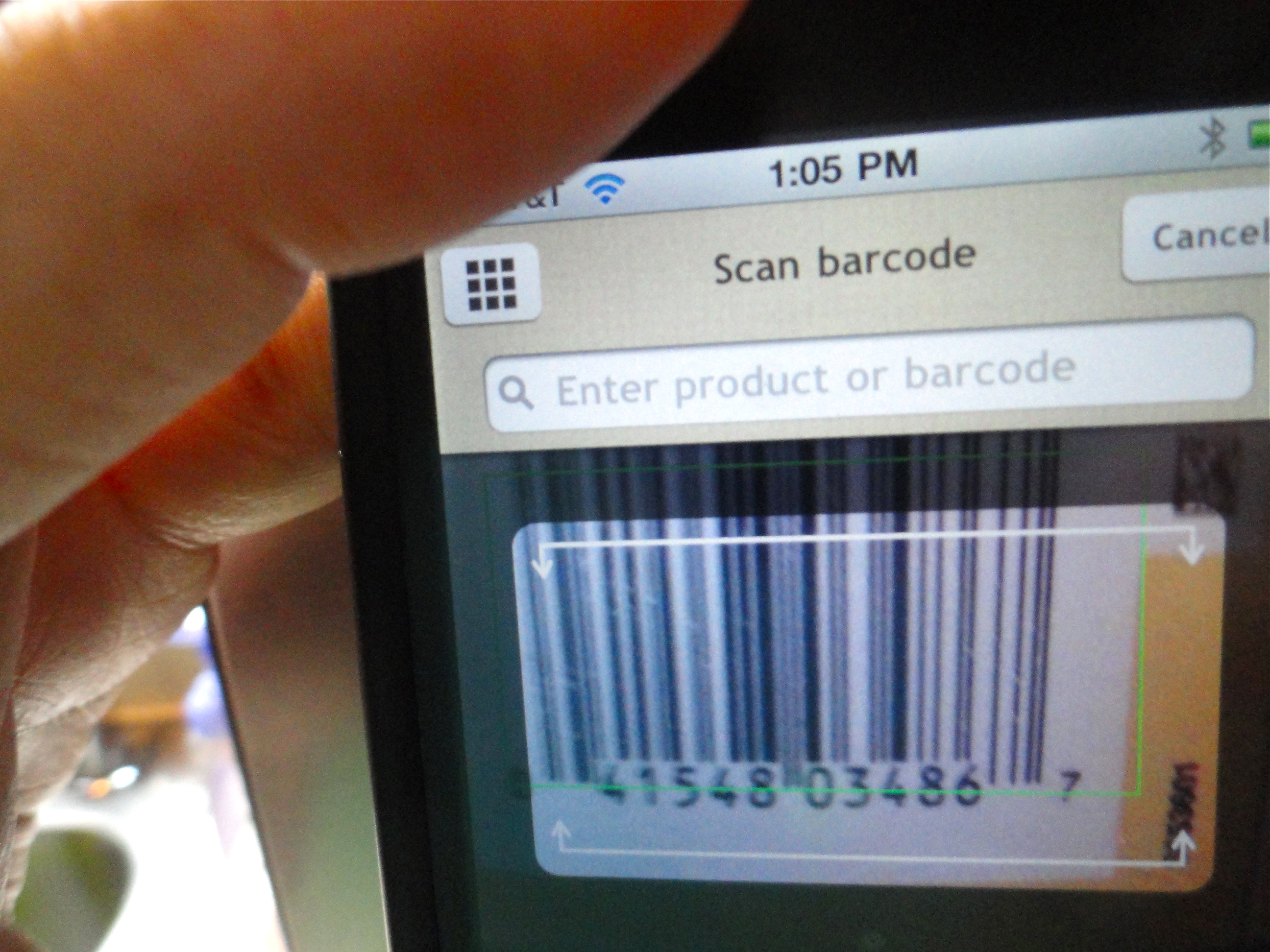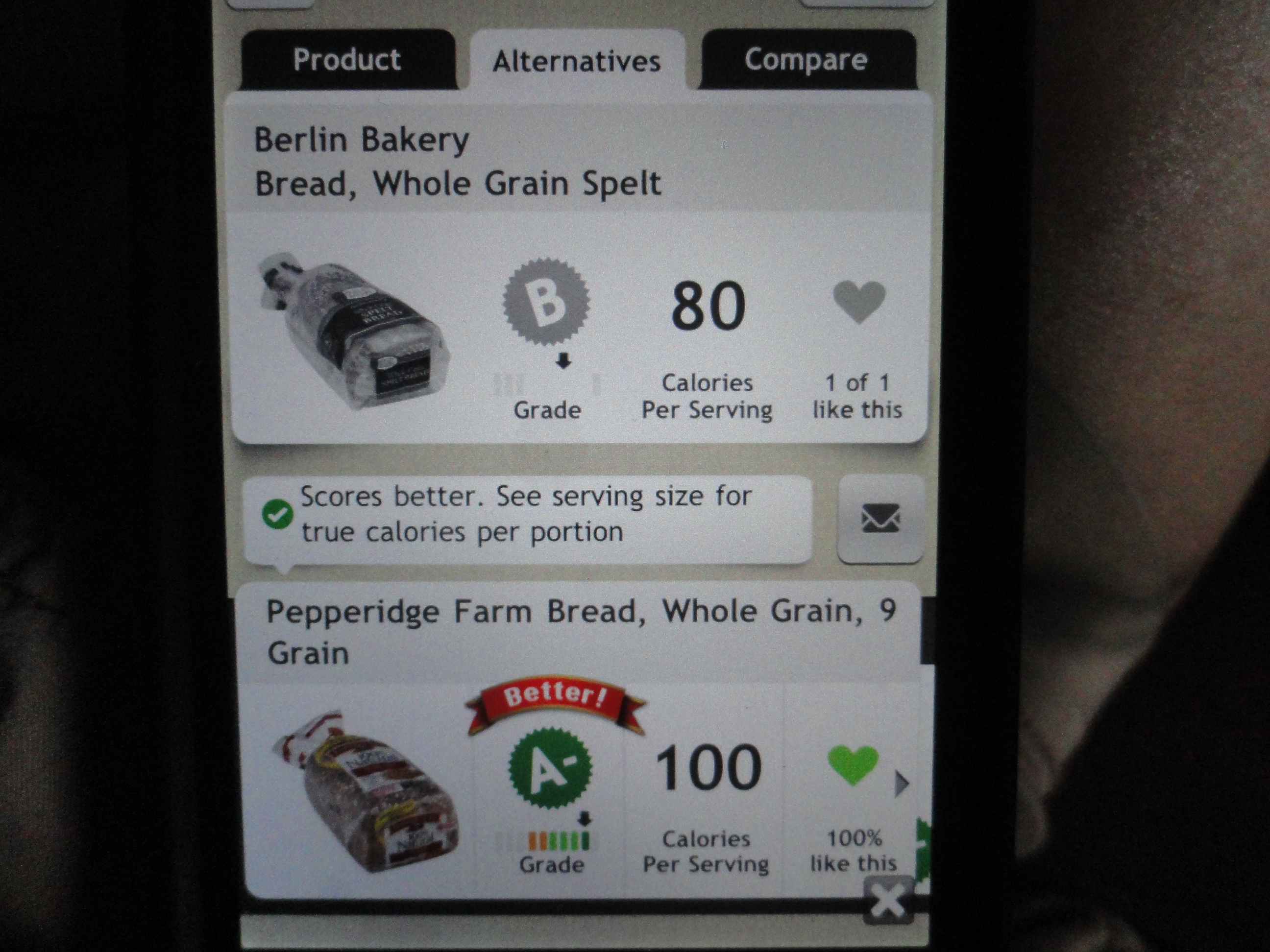Smartphone Apps and other mobile technology have proven to be powerful tools for tracking and managing health over the past few years. If my own explorations in the iPhone App Store in the last year are any indication, the number and variety of applications (and their scope of usability) will continue to grow exponentially in the years to come.
Currently, there are apps that can take your blood pressure, decipher drug tests and hold your entire medical record. There are diet apps that keep track of your exercise, caloric intake and the steps you walk in a day. Finally, there are apps that focus even more specifically on nutrition. We’ll focus on four apps in this category today.
 With the Fooducate App, you can scan groceries using their barcodes to find out how they rate based of factors such as calories, fat, artificial flavoring, sodium content and more. If that product doesn’t make the grade, the app will offer up several alternative products from which you can choose that might be a healthier option.
With the Fooducate App, you can scan groceries using their barcodes to find out how they rate based of factors such as calories, fat, artificial flavoring, sodium content and more. If that product doesn’t make the grade, the app will offer up several alternative products from which you can choose that might be a healthier option.
In the latest version of Fooducate, users can browse for products by categories, such as cold cereals, cheese, fruits or grains. The app also points out potential portion distortion on labeling—for instance a soda that gives nutrition facts for a serving size of 8 fl oz when the drink comes in a 20 fl oz bottle.
Not all of us can always make the commitment to “shop the perimeter of the grocery store,” where the produce and fresh (perishable foods are), as Michael Pollan advises In Defense of Food. Pollan also recommends against eating foods that contain ingredients you do not recognize.
Yet if you must or simply choose to, Center for Science in the Public Interest has released an app called Chemical Cuisine. It is a pretty terrific tool for deciphering those mysterious ingredients in much of the food many consume on a daily basis.
What in the world is datem, the last ingredient on the Bisquick box hiding at the back of the pantry? Feel like you need a degree in chemistry to figure out first, what it is, and second, what is its the purpose in a particular product? No fear, there’s an app for that: Chemical Cuisine.
Don’t have a smartphone? Consumers can find the same information, for instance a de-mythologizing of High Fructose Corn Syrup, on the CSPI website.
 For those concerned about pesticides in their produce, the Environmental Working Group offers an app listing a dozen fruits and vegetables with the most pesticide contamination, hence its title, Dirty Dozen. The Shopper’s Guide to Pesticide in Produce helps the consumer determine which fruits and vegetables would best be purchased organic, like apples, celery and strawberries. While you can also print out the list, it is extremely handy to have on touchscreen while cruising through the store or farmer’s market.
For those concerned about pesticides in their produce, the Environmental Working Group offers an app listing a dozen fruits and vegetables with the most pesticide contamination, hence its title, Dirty Dozen. The Shopper’s Guide to Pesticide in Produce helps the consumer determine which fruits and vegetables would best be purchased organic, like apples, celery and strawberries. While you can also print out the list, it is extremely handy to have on touchscreen while cruising through the store or farmer’s market.
Grocery shoppers can also consult the EWG’s Clean 15, which is considered to be the least contaminated produce, to decide what need not be purchased organic to be most healthy. These produce include onions, sweet corn, pineapples and sweet peas.
Our last app of the day is packed with a number of features that will appeal to those who like to dine out without the weighted guilt of excess calories, fat and sugar. The Eat This Not That! Restaurant App is based on the book series, which uncovers the mind-boggling nutritional facts about the food being served in restaurants and supermarkets around the country—and offers healthier alternatives. The app is meant to be used while dining out, offering lower calorie food substitutions, nutritional grades for thousands of items on adult and kid menus and summaries of the “best” and “worst” food selections at each restaurant featured.
 Users can test their nutritional knowledge with the ETNT! (Eat This Not That) Game, by picking the the better of two food options in the breakfast, lunch or dinner categories. In the timed game, more nutritional info—calories, fat, etc.—is revealed about each food, which is an educational revelation itself. Players may be startled—and disgusted—to discover that some foods they thought were “healthier” options actually pack plenty more fat and calories than surprising alternatives.
Users can test their nutritional knowledge with the ETNT! (Eat This Not That) Game, by picking the the better of two food options in the breakfast, lunch or dinner categories. In the timed game, more nutritional info—calories, fat, etc.—is revealed about each food, which is an educational revelation itself. Players may be startled—and disgusted—to discover that some foods they thought were “healthier” options actually pack plenty more fat and calories than surprising alternatives.
The app also includes tools for a personalized weight loss plan. One can record and track lost weight and calories consumed and burned. A food database contains the calorie count for thousands of grocery products and restaurant items. It also calculates calories burned for more than 200 exercises and activities.


This is a great post updating best nutrition apps today!
Thanks so much, Kathryn!
An outstanding share! I have just forwarded this onto a co-worker who has
been doing a little research on this. And he actually bought me breakfast due to the fact that
I discovered it for him… lol. So let me reword this…. Thank YOU for the meal!!
But yeah, thanks for spending the time to discuss this topic here on your web site.
Great collection.But, Fooducate is the best calorie tracker.
Thanks for sharing an awesome content